Each character entry below contains a ≤1 MB QuickTime movie of the character being painted with a brush, created by Prof. Saeko Komori of Chubu University. Please see the JP Net Kanji Project for more details.
In the following definitions, on (Chinese-based) readings are represented by katakana, and by capital romaji letters; kun (native Japanese-based) readings are represented by hiragana, and by lower-case romaji letters. This is a common dictionary convention, and does not have any bearing on meaning.
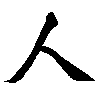
Stroke order: (MOV)
Printed form: 人
Readings: ジン JIN
Meaning: person
Mnemonic:
A side view of a person walking.
Usage examples:
アメリカ人 (アメリカじん) an American
日本人 (にほんじん) a Japanese
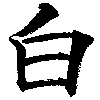
Stroke order: (MOV)
Printed form: 白
Readings: しろ shiro
Meaning: white
Mnemonic:
The sun 日 and its white sunlight (top stroke).
Usage examples:
白い (しろい) is white
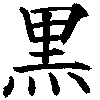
Stroke order: (MOV)
Printed form: 黒
Readings: くろ kuro
Meaning: black
Mnemonic:
The chimney 里 where soot collects and fire 火 (the bottom strokes).
Usage examples:
黒い (くろい) is black
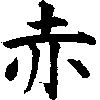
Stroke order: (MOV)
Printed form: 赤
Readings: あか aka
Meaning: red
Mnemonic:
The earth 土 and a flame 火.
Usage examples:
赤い (あかい) is red
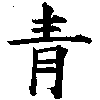
Stroke order: (MOV)
Printed form: 青
Readings: あお ao
Meaning: blue
Mnemonic:
The grass (top component) looks blue under the moon 月 at night.
Usage examples:
青い (あおい) is blue
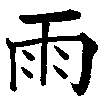
Stroke order: (MOV)
Printed form: 雨
Readings: あめ ame
Meaning: rain
Mnemonic:
Rain drops keep falling under the cloud...
Usage examples:
雨 (あめ) rain
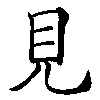
Stroke order: (MOV)
Printed form: 見
Readings: み- mi-
Meaning: see; look at; show
Mnemonic:
An eye 目 on a pair of legs.
Usage examples:
見ます (みます) (I'll) see (it).
見せます (みせます) (I'll) show (it).
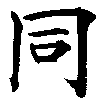
Stroke order: (MOV)
Printed form: 同
Readings: おな- ona-
Meaning: same
Mnemonic:
One 一 mouth 口 in an enclosure represents the oneness of opinions.
Usage examples:
同じ (おなじ) the same
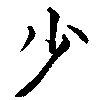
Stroke order: (MOV)
Printed form: 少
Readings: すこ-/ショウ suko-/SHOO
Meaning: few; a little
Mnemonic:
A portion from something small 小 is cut off by another stroke.
Usage examples:
少し (すこし) a little; a few
少々 (しょうしょう) a little
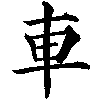
Stroke order: (MOV)
Printed form: 車
Readings: くるま/シャ kuruma/SHA
Meaning: car
Mnemonic:
A sketch of a two-wheeled cart.
Usage examples:
車 (くるま) car

Stroke order: (MOV)
Printed form: 国
Readings: コク/ゴク KOKU/GOKU
Meaning: country; nation
Mnemonic:
Within the boundary of a country, there is a king 王 and jewels 玉.
Usage examples:
国語 (こくご) mother-tongue (the Japanese language)
中国 (ちゅうごく) China
中国語 (ちゅうごくご) Chinese language
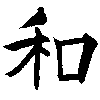
Stroke order: (MOV)
Printed form: 和
Readings: ワ WA
Meaning: Japanese; peace
Mnemonic:
An ear of grain 禾 and a mouth 口.
Usage examples:
和英 (わえい) Japanese-English (dictionary)
英和 (えいわ) English-Japanese (dictionary)
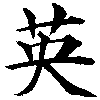
Stroke order: (MOV)
Printed form: 英
Readings: エイ EE
Meaning: England
Mnemonic:
The grass radical on the top and 央 (center).
Usage examples:
英語 (えいご) English language
英国 (えいこく) England
New Readings
New readings.
| KANJI | READINGS |
| 一つ |
(ひとつ), one unit (inanimate) |
| 二つ |
(ふたつ), two units |
| 三つ |
(みっつ), three units |
| 四つ |
(よっつ), four units |
| 五つ |
(いつつ), five units |
| 六つ |
(むっつ), six units |
| 七つ |
(ななつ), seven units |
| 八つ |
(やっつ), eight units |
| 九つ |
(ここのつ), nine units |
| 十 |
(とお), ten units |
| 中国 |
(ちゅうごく), China |
[Quizzes (JavaScript required): Meaning (15 questions) | Reading (21 questions) | Character Recognition (12 questions)]
[Lesson 5 Home]

















